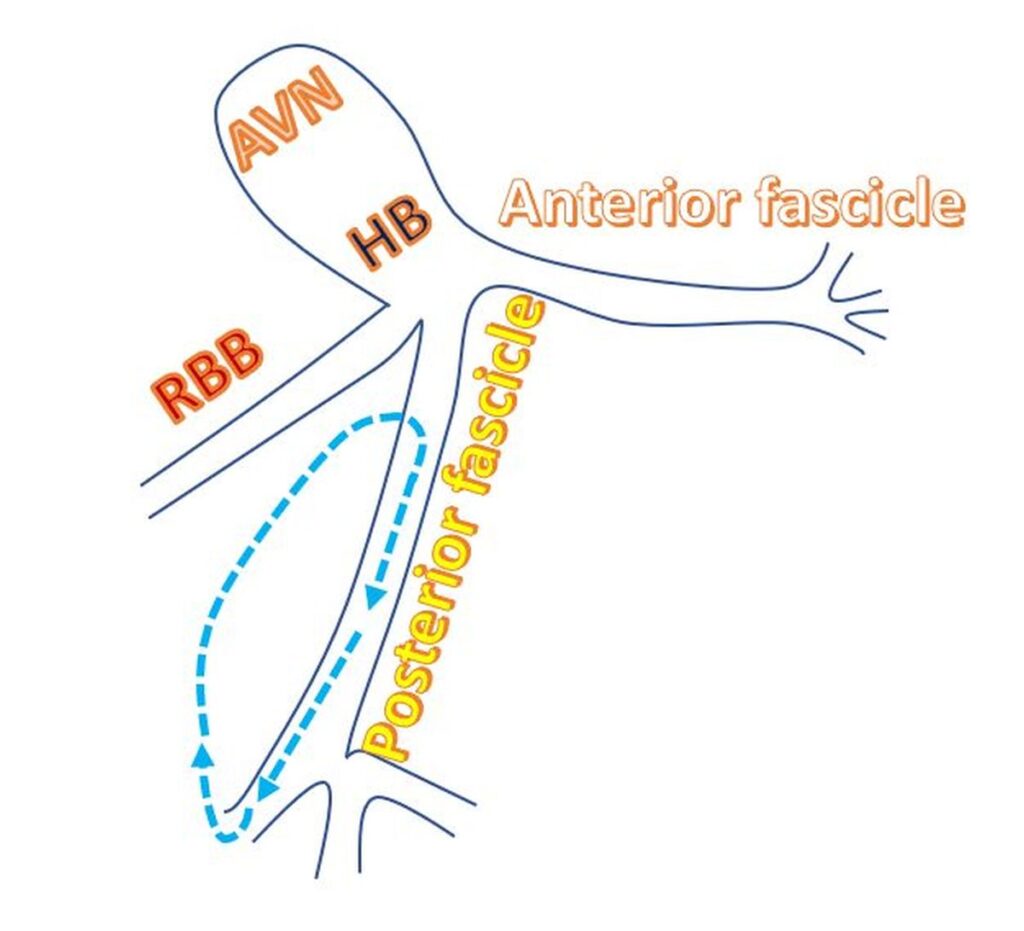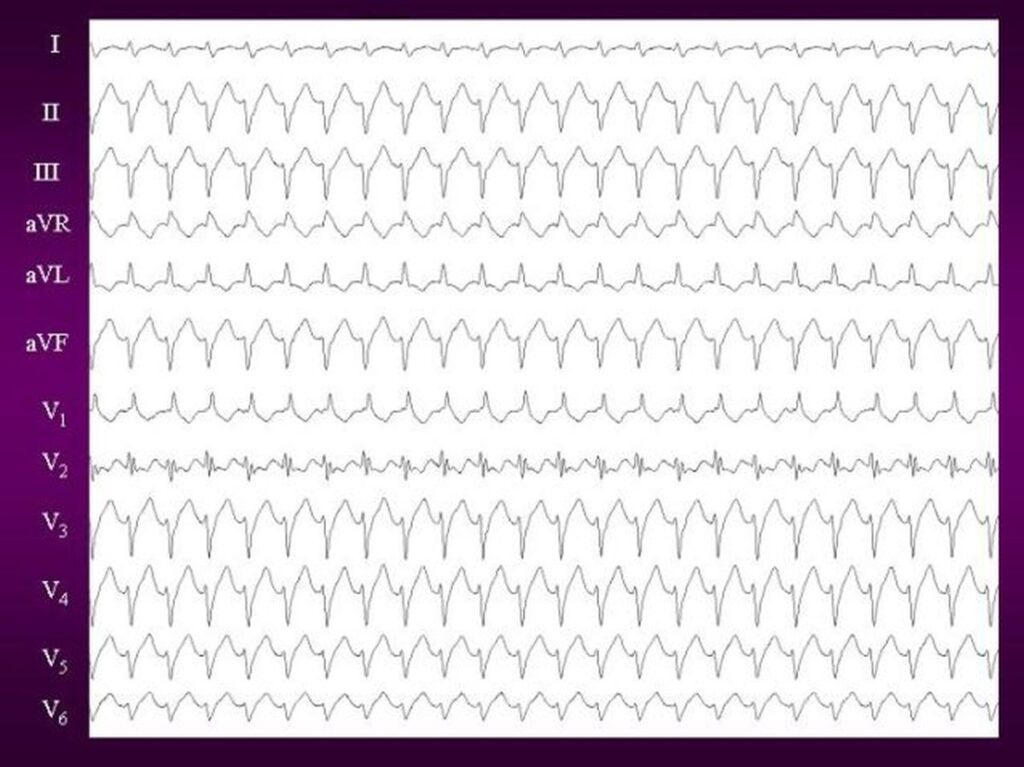Idiopathic Fascicular Ventricular Tachycardia (Belhassen’s Ventricular Tachycardia)
Idiopathic Fascicular Ventricular Tachycardia (Belhassen’s Ventricular Tachycardia)
Idiopathic fascicular ventricular tachycardia is unique in that it has a relatively narrower QRS width and it responds to verapamil. It has also been called as verapamil sensitive tachycardia and Belhassen’s ventricular tachycardia. One of the earlier descriptions was by Belhassen in 1984, published in the American Heart Journal. The classical form is characterized by right bundle branch block pattern and left axis deviation and a QRS duration of around 120 msec. This variety is due to re-entry in the region of the posterior fascicle of the left bundle branch. Hence it is also called posterior fascicular tachycardia. The rarer variety arising from the region of the anterior fascicle has right axis deviation and right bundle branch block pattern. A still rarer variety with normal axis and right bundle branch block pattern has also been described, which has been called as the septal fascicular tachycardia.

The important feature of Belhassen’s ventricular tachycardia, is as mentioned earlier, the response to verapamil and adenosine. In view of the relatively narrower QRS duration, it may mistakenly considered to be of supraventricular origin. Long term treatment with verapamil can prevent recurrence. But the treatment of choice currently is radiofrequency catheter ablation. This is because of the good results and lower risks of the procedure in this form of ventricular tachycardia. Radiofrequency catheter ablation offers a permanent cure in most cases and avoids the problems of long term medical therapy.

12 lead ECG of Idiopathic Fascicular Ventricular Tachycardia showing classical right bundle branch block (RBBB) pattern with leftward axis morphology suggestive of posterior fascicular origin. Courtesy: Johnson Francis, Venugopal K, Khadar SA, Sudhayakumar N, Anoop K. Gupta. Idiopathic Fascicular Ventricular Tachycardia. Indian Pacing Electrophysiol. J. 2004;4(3):98-103.



